Complete Solutions to Linked Comprehension Type Questions of chapter STATES OF MATTER (SOLID STATE) of Class 11 book with complete answers and questions
| Class 11 | CHEMISTRY |
| Chapter | STATES OF MATTER (SOLID STATE) |
| OP TANDON | Linked Comprehension Type Questions |
| Number Of Questions | 14 |
| Academic Year | 2023-24 |
In a hexaonal system system of cycstals, a frequently encountered arrangement of atoms is described as a hexagonal prism. Here, the top and bottom of the cell are refular hexagons, and three atoms are sandwiched in between them. A space-cilling model of this structure, called hexagonal close-paked is constituted of a sphere on a flat surface surrounded in the same plane by six identical spheres as closely as possible. Three spherres are then placed overt the first layer so that they toych each other and represent the second layer so that they toych each other and present the second layer. Each one of the three spheres touches three spheres of the bottom layer. Finally, the second layer is convered with a third layer identical to the bottom layer in relative position. Assume the radius of every sphere to be `r`.
The empty space in this hcp unit cell is
View SolutionIn a hexaonal system system of cycstals, a frequently encountered arrangement of atoms is described as a hexagonal prism. Here, the top and bottom of the cell are refular hexagons, and three atoms are sandwiched in between them. A space-cilling model of this structure, called hexagonal close-paked is constituted of a sphere on a flat surface surrounded in the same plane by six identical spheres as closely as possible. Three spherres are then placed overt the first layer so that they toych each other and represent the second layer so that they toych each other and present the second layer. Each one of the three spheres touches three spheres of the bottom layer. Finally, the second layer is convered with a third layer identical to the bottom layer in relative position. Assume the radius of every sphere to be `r`.
The empty space in this hcp unit cell is
View SolutionIn a hexaonal system system of cycstals, a frequently encountered arrangement of atoms is described as a hexagonal prism. Here, the top and bottom of the cell are refular hexagons, and three atoms are sandwiched in between them. A space-cilling model of this structure, called hexagonal close-paked is constituted of a sphere on a flat surface surrounded in the same plane by six identical spheres as closely as possible. Three spherres are then placed overt the first layer so that they toych each other and represent the second layer so that they toych each other and present the second layer. Each one of the three spheres touches three spheres of the bottom layer. Finally, the second layer is convered with a third layer identical to the bottom layer in relative position. Assume the radius of every sphere to be `r`.
The number of atom in this hcp unit cell is
View SolutionPacking refers to the arrangement of constituent units in such a way that the forces of attraction among the constituent particles is maximum and the constituents occupy the maximum available space. In two -dimensions ,there are square close packing and hexagonal close packing .In three- dimensions ,however, there are hexagonal close packing, cubic close packing and body-centered cubic packing.
(i) hcp: AB AB AB AB ..... arrangement
`" "`coordination no. = 12
`" "` % occupied space = 74
(ii) ccp: ABC ABC.... arrangement lt brgt `" "` coordination no. = 12
`" "`% occupied space = 74
bcc: 68% space is occupied
`" "`coordination no.= 8
The empty space laft in three -dimensions is :
View SolutionPacking refers to the arrangement of constituent units in such a way that the forces of attraction among the constituent particles is maximum and the constituents occupy the maximum available space. In two -dimensions ,there are square close packing and hexagonal close packing .In three- dimensions ,however, there are hexagonal close packing, cubic close packing and body-centered cubic packing.
(i) hcp: AB AB AB AB ..... arrangement
`" "`coordination no. = 12
`" "` % occupied space = 74
(ii) ccp: ABC ABC.... arrangement lt brgt `" "` coordination no. = 12
`" "`% occupied space = 74
bcc: 68% space is occupied
`" "`coordination no.= 8
The closed packed lattice containing 'n' particles ,the numbers of tetrahedral and octahedral voids are:
View SolutionPacking refers to the arrangement of constituent units in such a way that the forces of attraction among the constituent particles is maximum and the constituents occupy the maximum available space. In two -dimensions ,there are square close packing and hexagonal close packing .In three- dimensions ,however, there are hexagonal close packing, cubic close packing and body-centered cubic packing.
(i) hcp: AB AB AB AB ..... arrangement
`" "`coordination no. = 12
`" "` % occupied space = 74
(ii) ccp: ABC ABC.... arrangement
`" "` coordination no. = 12
`" "`% occupied space = 74
bcc: 68% space is occupied
`" "`coordination no.= 8
The pattern of successive layers of ccp arrangement can be designated as:
View SolutionPacking refers to the arrangement of constituent units in such a way that the forces of attraction among the constituent particles is maximum and the constituents occupy the maximum available space. In two -dimensions ,there are square close packing and hexagonal close packing .In three- dimensions ,however, there are hexagonal close packing, cubic close packing and body-centered cubic packing.
(i) hcp: AB AB AB AB ..... arrangement
`" "`coordination no. = 12
`" "` % occupied space = 74
(ii) ccp: ABC ABC.... arrangement
`" "` coordination no. = 12
`" "`% occupied space = 74
bcc: 68% space is occupied
`" "`coordination no.= 8
The spaced occupied by spheres in bcc arrangement is:
View SolutionPacking refers to the arrangement of constituent units in such a way that the forces of attraction among the constituent particles is maximum and the constituents occupy the maximum available space. In two -dimensions ,there are square close packing and hexagonal close packing .In three- dimensions ,however, there are hexagonal close packing, cubic close packing and body-centered cubic packing.
(i) hcp: AB AB AB AB ..... arrangement
`" "`coordination no. = 12
`" "` % occupied space = 74
(ii) ccp: ABC ABC.... arrangement
`" "` coordination no. = 12
`" "`% occupied space = 74
bcc: 68% space is occupied
`" "`coordination no.= 8
The A certain oxide of metal M crystallises in such way that `O^(2-)` ions occupy hcp arrangement following AB AB....pattern. The metals ions ,however ,occupy `(2)/(3)`rd of the octahedral voids. The formula of the compound is:
View SolutionPacking refers to the arrangement of constituent units in such a way that the forces of attraction among the constituent particles is maximum and the constituents occupy the maximum available space. In two -dimensions ,there are square close packing and hexagonal close packing .In three- dimensions ,however, there are hexagonal close packing, cubic close packing and body-centered cubic packing.
(i) hcp: AB AB AB AB ..... arrangement
`" "`coordination no. = 12
`" "` % occupied space = 74
(ii) ccp: ABC ABC.... arrangement
`" "` coordination no. = 12
`" "`% occupied space = 74
bcc: 68% space is occupied
`" "`coordination no.= 8
Which type of stacking pattern is found in sodium chloride 's crystal lattice?
View Solution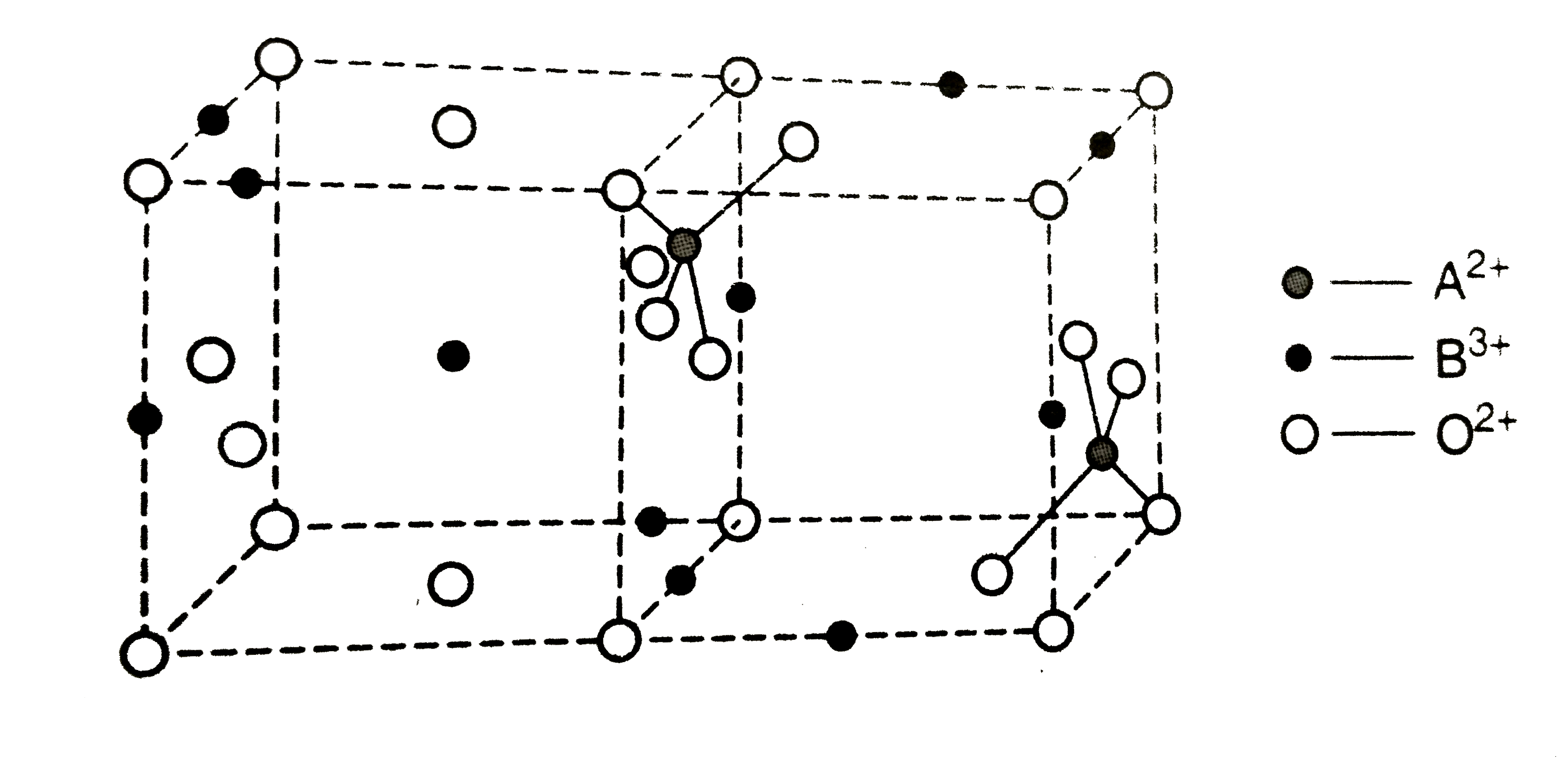
The space lattice given in the figure to :
View Solution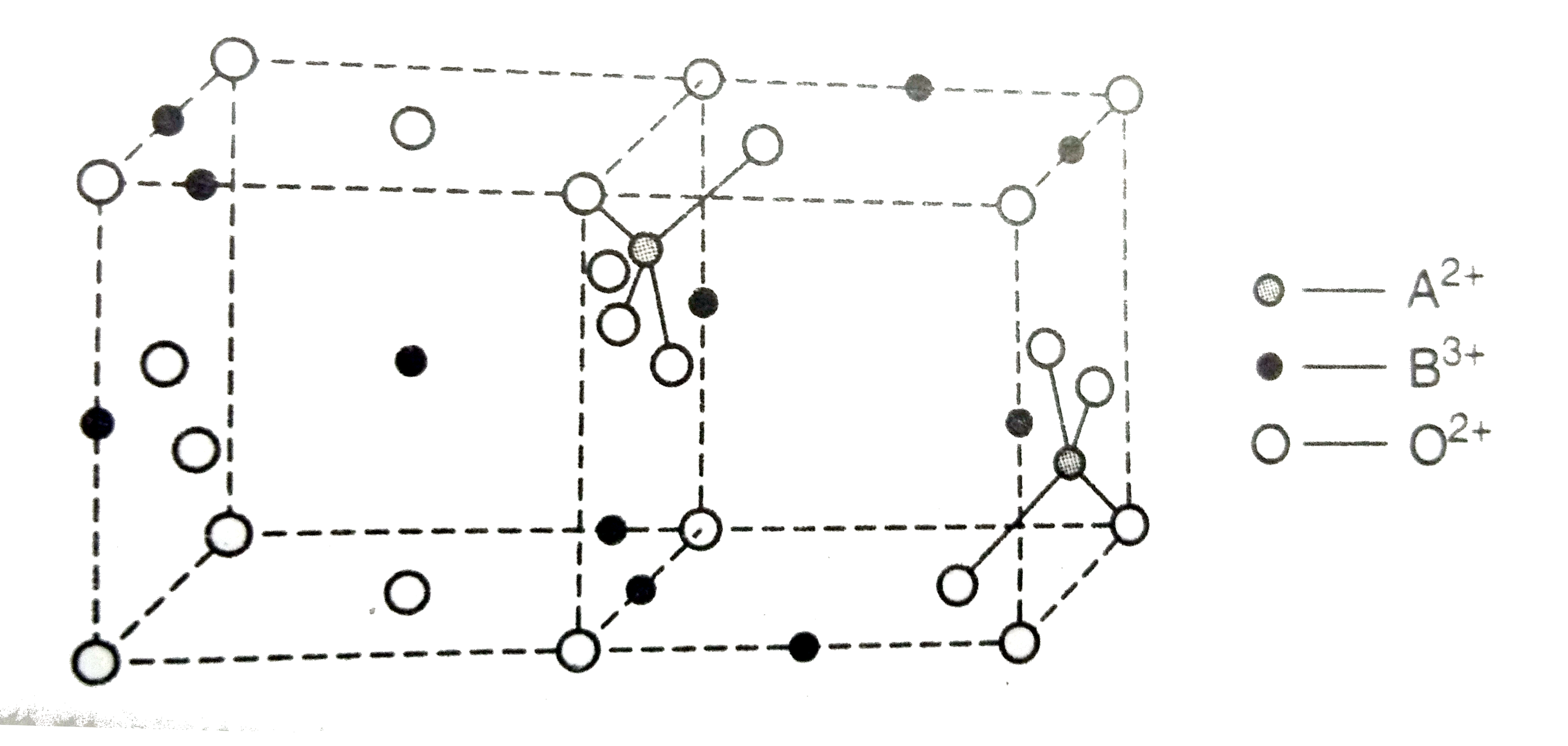
`O_(2-)` ions are present in :
View Solution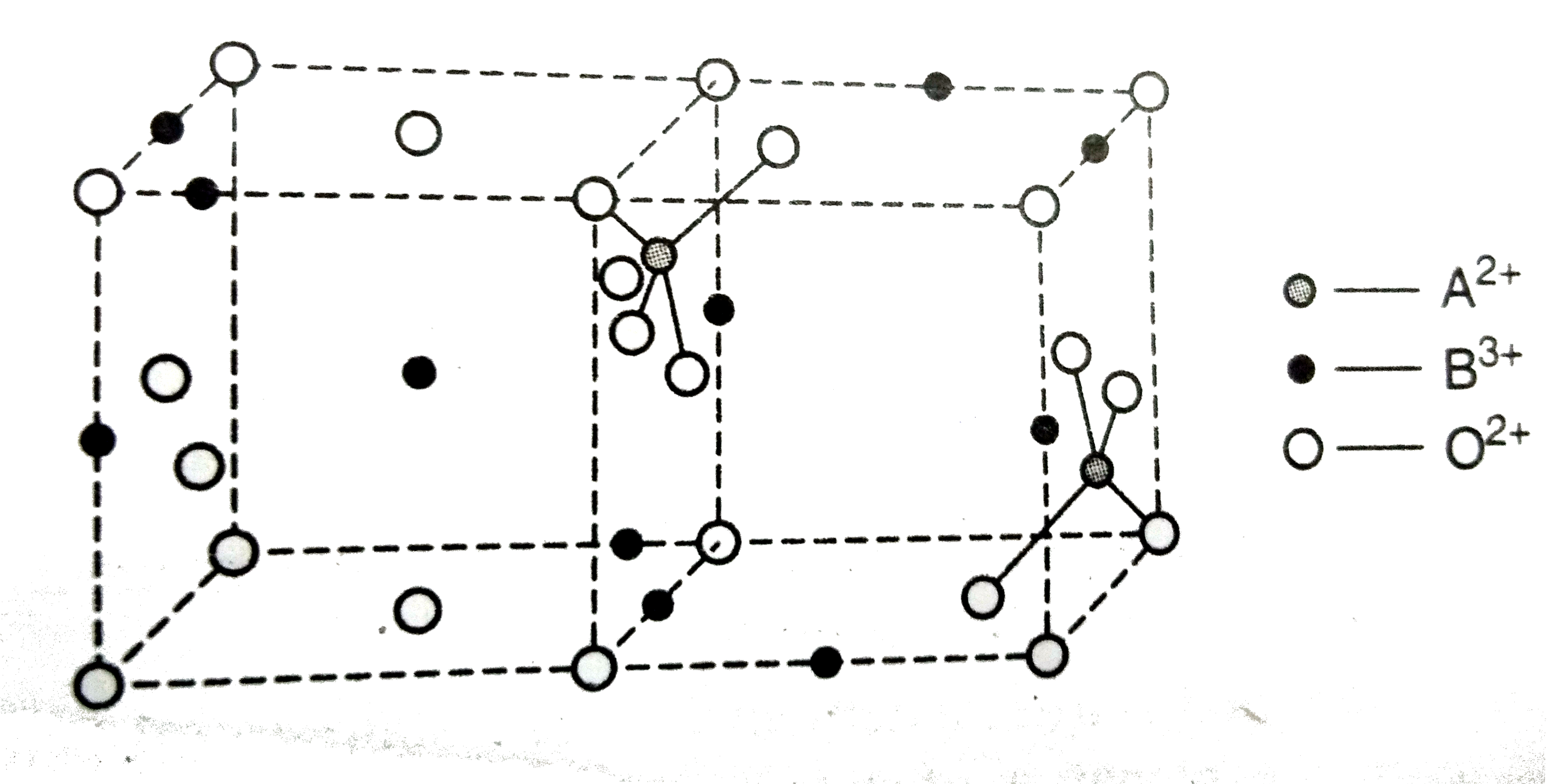
The formula of the compound is :
View Solution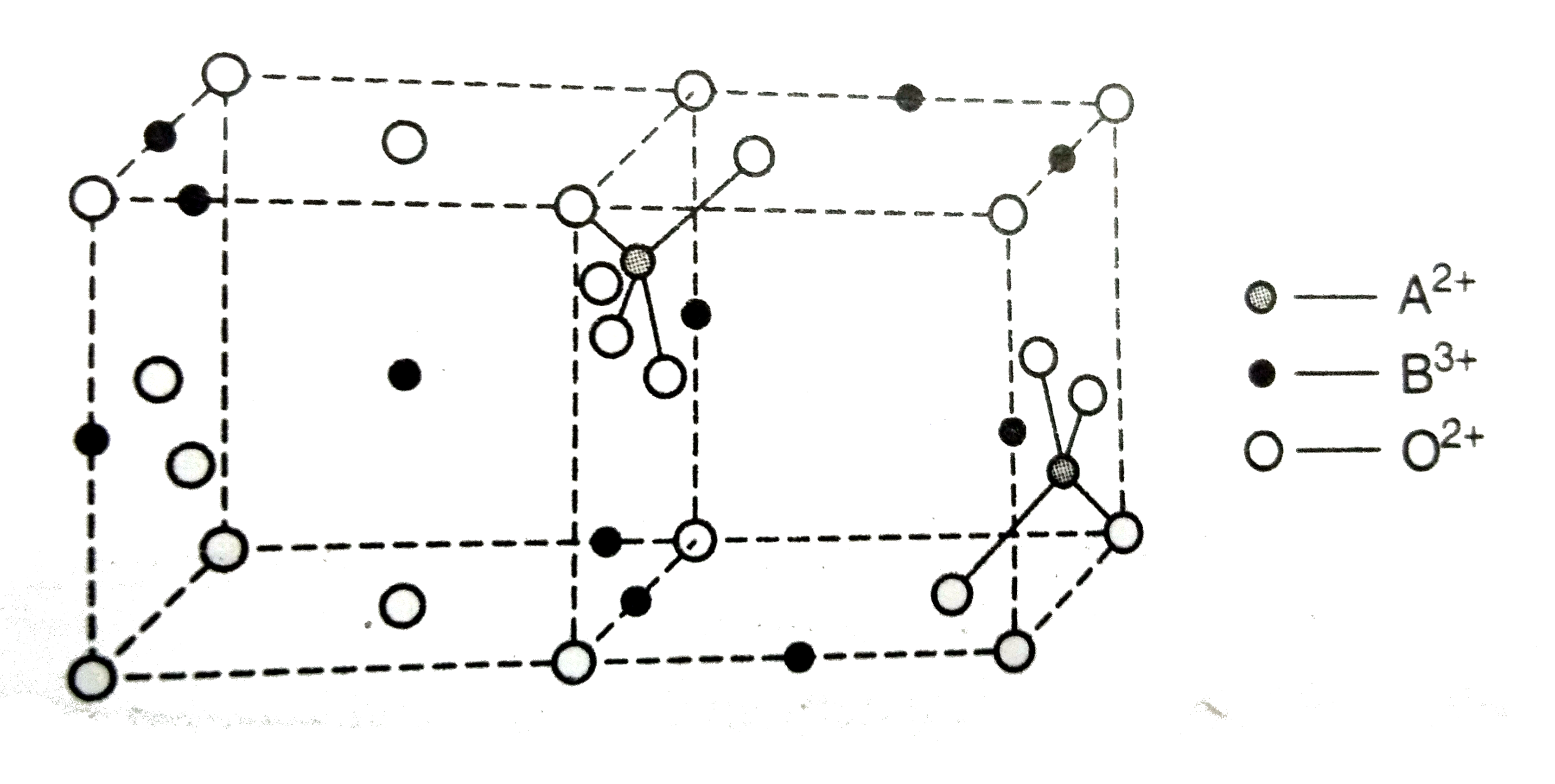
Fraction of the total octahedral voids occupied will be :
View Solution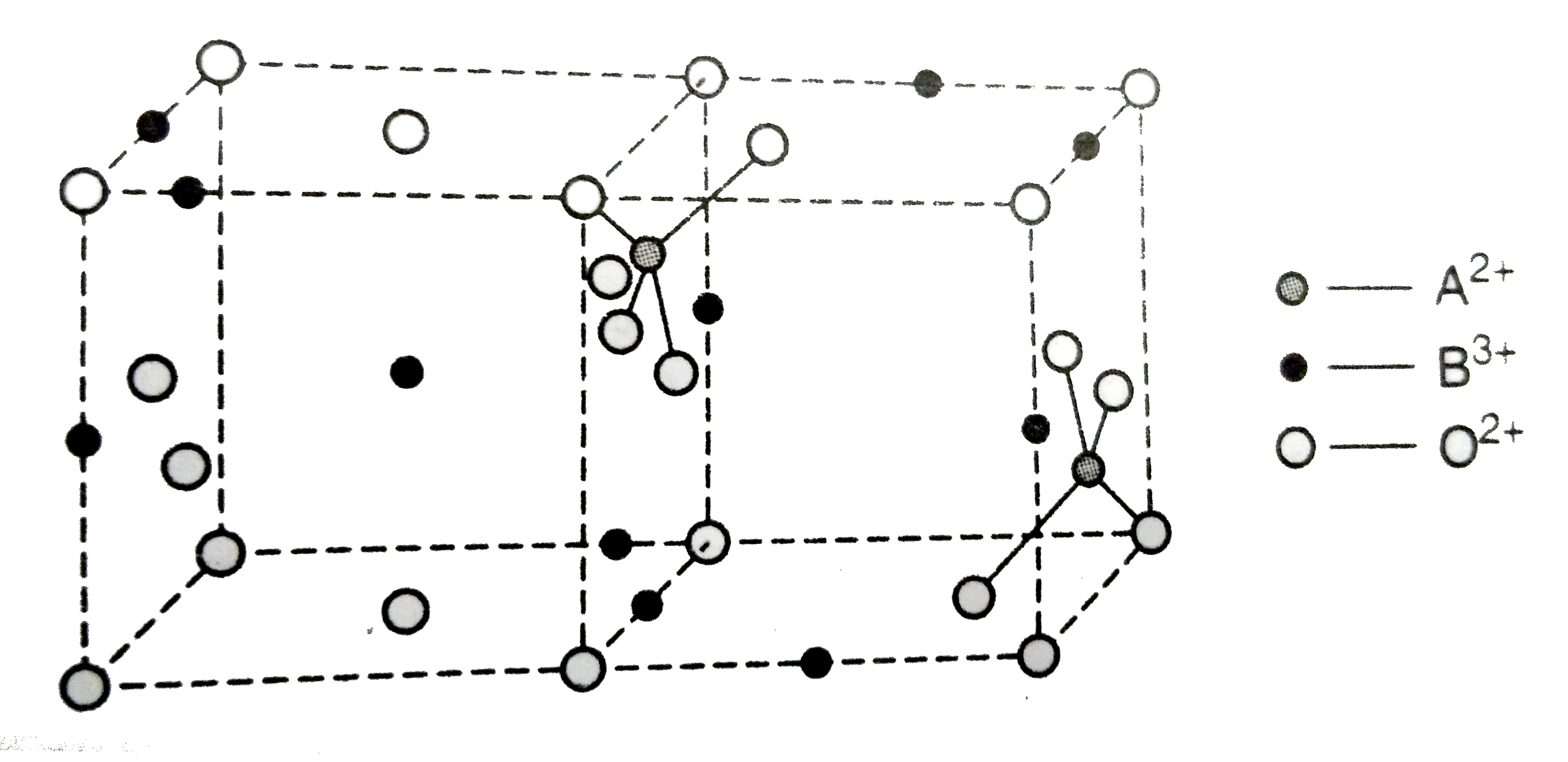
`B^(3+)` and `A^(2+)` ions are present in:
View Solution
Linked Comprehension Type Questions questions and complete solutions for chapter STATES OF MATTER (SOLID STATE) of G.R. BATHLA & SONS CHEMISTRY (HINGLISH) of Class 11
All Exercises from OP TANDON Class 11 CHEMISTRY STATES OF MATTER (SOLID STATE)
- Asertion-Reason type Questions
- Illustrations of Objective Questions
- Integer Answer Type Questions
- Linked Comprehension Type Questions
- Matrix Matching Type Questions
- OBJECTIVE QUESTIONS (LEVEL -A)
- Objective Questions (Level-B)
- Practice Problems
- SELF ASSESSMENT Section I
- SELF ASSESSMENT Section II
- SELF ASSESSMENT Section III
- SELF ASSESSMENT Section IV
- SELF ASSESSMENT Section V
- SELF ASSESSMENT Section VI
- Some Solved Examples